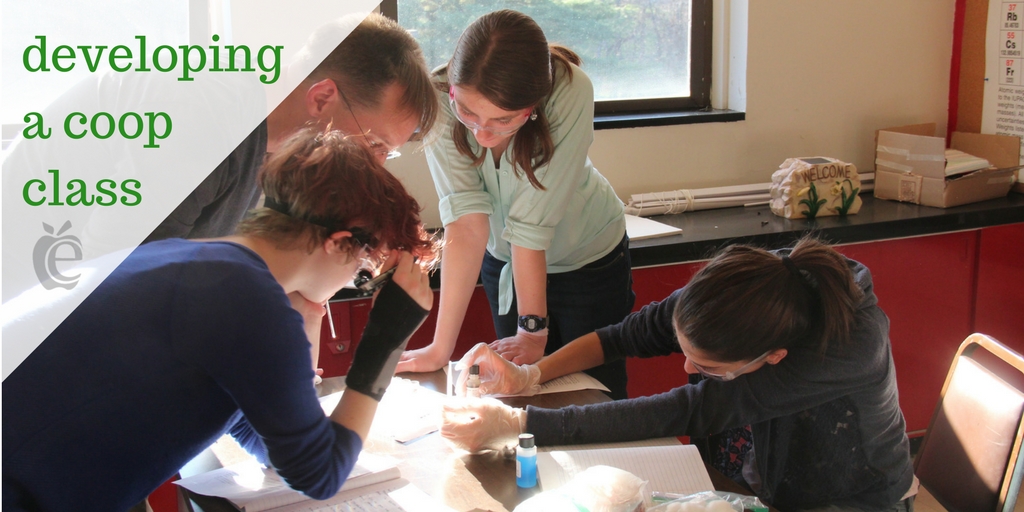Tips for Developing a Course
Enrichment means many things: learning something new, doing something very familiar with new friends, gaining experience in a classroom setting, learning how to do something, an opportunity to practice something, an opportunity to discover a new talent, an opportunity to get different perspectives, an opportunity to develop academic skills, an opportunity to develop interaction skills, an opportunity to learn reliability/responsibility, an opportunity to practice self-control, and opportunity to enjoy good company, and finally, an opportunity to grow!
You don’t always know the parents’ objectives for being at The Enrichment Center. Perhaps one parent is really hoping to get support in helping to reinforce some subject, while others are just looking for a fun and social environment. Sometimes you can ask older kids why they are there to get a feel for the purpose of their attendance. You may even modify your course based on feedback from the students attending, but I am not necessarily recommending that. Your class will address at least one if not several of these aspects of enrichment.
Finally, the greatest aspect of The Enrichment Center can be the opportunity for children to experience the love and nurturing of another adult in their lives. Experiencing your kindness, your affection for them builds them up like nothing else. Therefore, realize that just being with the children and giving from your heart is the best aspect of Enrichment. From that, many other good benefits will come. Children thrive in an environment of love and nurturing. The more they experience it, the stronger they will be.
On the other hand, sometimes dynamics between kids in the class can be difficult. This is also an aspect of Enrichment because it is an opportunity for children/students to learn what types of conflicts exist and how to deal with them.
Thus, conflicts are not necessarily the end of the world. Finding a solution as the teacher is another way of helping the students to learn about navigating life. It is also true that a class that is well structured tends to eliminate conflicts between students. “Dead time” or confusion, precipitated boredom, and agitation in kids and triggers them to fill that “dead” time with their own antics. Your structure will help keep the focus and prevent the glitches that are the result of boredom or confusion. That is not true in every case, but in many cases.

Picking a Topic
Choose a topic based on one or more of these reasons: you love it, it is practical, it is easy, you have done it before, it is popular, it is original, it is rare, it is fun!
Course Parameters
Objectives, targeted students (this is important), intended outcomes, 12 – week framework
Course Objectives
Objectives can range from completing a project to just having quality time with friends. Be sure to know your objectives so that you have a sense of accomplishment. Furthermore, the students do better when they are aware of the objectives and what is the purpose/function of what they are doing.
Remember most of the students are there to have fun with friends! They may be focused on that more than you want them to be, but realize that as homeschooled students, having time with other kids is something extra special, so it takes precedence in the students’ minds.
Targeted Students
Think about the range of ages you want in your class and how many. It is OK to narrow your total number of students to keep it manageable enough for you. Don’t feel obligated to open the course to as many students as possible. Keep the class to a size where you can facilitate the goals you have in mind without being overwhelmed with keeping too many squirmy students on track.
Course “Deliverables”
A weekly worksheet? A fun discussion? A movie series? Learning a new technique? Practicing handwriting? Becoming better organized? A final project that has multiple steps? Something for the portfolio? A presentation for others at The Enrichment Center? Something memorized? Simple fun with friends in a structured setting? These are all examples of what you could consider a “deliverable”. Small tasks add up. Repeated tasks can help form new academic habits. A little goes a long, long way.
Twelve Piece Time-table and Potential Pitfalls
You have twelve meetings. Not all students will be there every week. Not all students will be reliable. If your course has a step-by-step process, you must emphasize attendance, etc. It is perfectly acceptable to have each class be its own complete story with no build-up between so that attendance, etc. will not affect your projects. Maybe some students will be struggling in a particular area, so your class flow may not be exactly as you had intended. Be prepared to be flexible and adaptable.
Final Thoughts
- Break up your content into twelve parts
- Anticipate things that can pop up and side-track you/slow you down. Not everything can be anticipated.
- Don’t let obstacles stress you out. Just find a solution and go with the flow.
- Don’t try to master too many goals in this time frame. Over-zealous plans are usually not do-able. The more you can narrow down your tasks, the better. If quality time is your goal, each class can be full of rich experiences with discussion, a project, quality audio-visuals, fun games, etc. This is especially true for younger children. With older students, your goals can be more multifaceted. You can also consider a year-long sequence if need be.
And above all….have fun!

